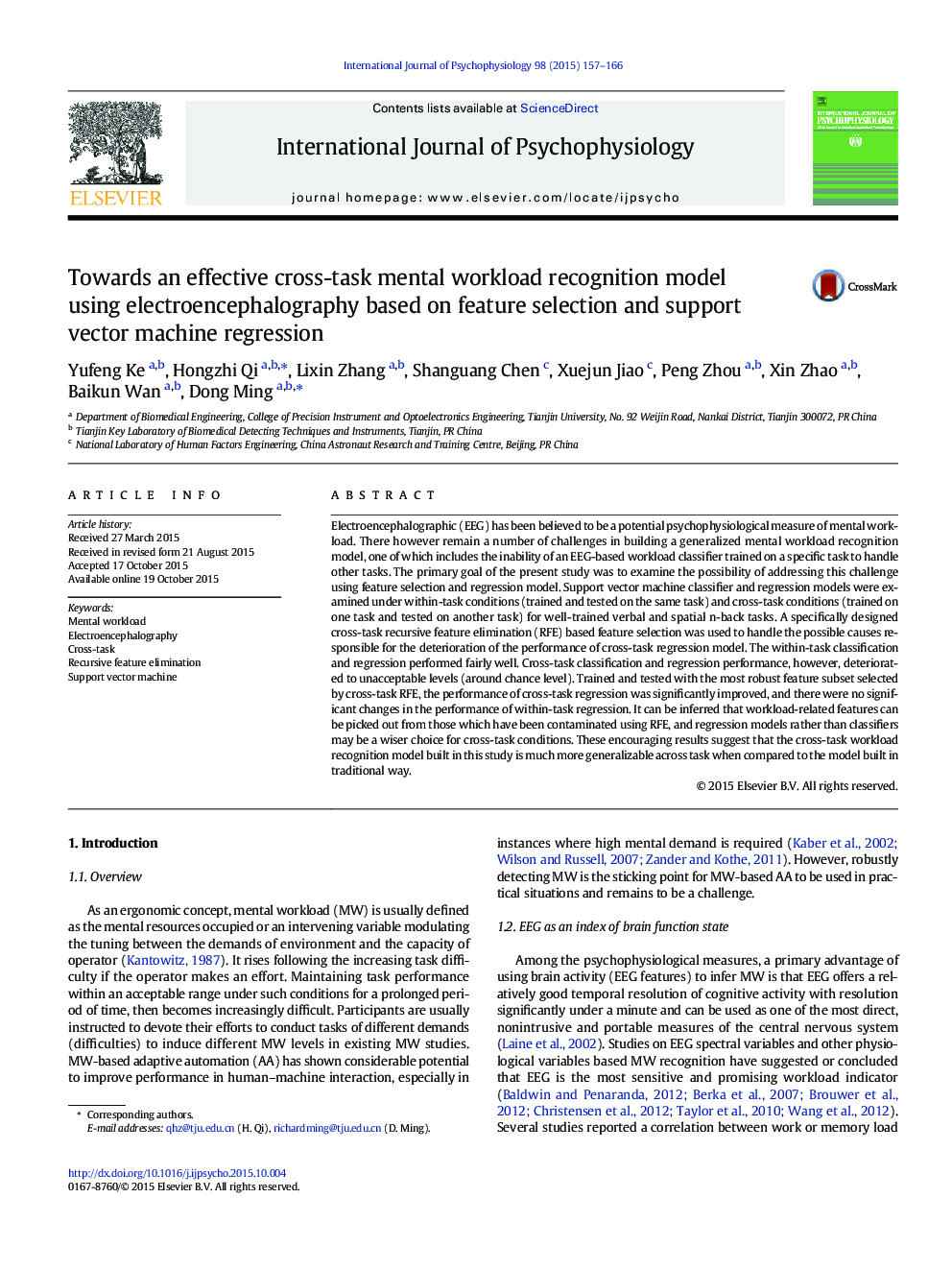| کد مقاله | کد نشریه | سال انتشار | مقاله انگلیسی | نسخه تمام متن |
|---|---|---|---|---|
| 929819 | 1474401 | 2015 | 10 صفحه PDF | دانلود رایگان |
• EEG-based cross-task workload recognition remains to be a challenge.
• With all features, cross-task workload recognition performances were very poor.
• Specifically-designed recursive feature elimination picked out the robust features.
• The robust features significantly improved performances of cross-task regressions.
• Our findings provide a promising solution for cross-task workload recognition.
Electroencephalographic (EEG) has been believed to be a potential psychophysiological measure of mental workload. There however remain a number of challenges in building a generalized mental workload recognition model, one of which includes the inability of an EEG-based workload classifier trained on a specific task to handle other tasks. The primary goal of the present study was to examine the possibility of addressing this challenge using feature selection and regression model. Support vector machine classifier and regression models were examined under within-task conditions (trained and tested on the same task) and cross-task conditions (trained on one task and tested on another task) for well-trained verbal and spatial n-back tasks. A specifically designed cross-task recursive feature elimination (RFE) based feature selection was used to handle the possible causes responsible for the deterioration of the performance of cross-task regression model. The within-task classification and regression performed fairly well. Cross-task classification and regression performance, however, deteriorated to unacceptable levels (around chance level). Trained and tested with the most robust feature subset selected by cross-task RFE, the performance of cross-task regression was significantly improved, and there were no significant changes in the performance of within-task regression. It can be inferred that workload-related features can be picked out from those which have been contaminated using RFE, and regression models rather than classifiers may be a wiser choice for cross-task conditions. These encouraging results suggest that the cross-task workload recognition model built in this study is much more generalizable across task when compared to the model built in traditional way.
Journal: International Journal of Psychophysiology - Volume 98, Issue 2, Part 1, November 2015, Pages 157–166
